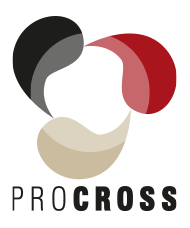ProCROSS Advantages
ProCROSS cows have different strengths: Fertility, Health, Cull Value, Efficiency, Longevity and Lifetime Profit.
These advantages were identified in the most important scientific study into crossbreeding dairy cattle yet undertaken. It was led by Professor Les Hansen from the University of Minnesota and its results were published in July 2019. Its conclusions included the following:

Fertility
The ProCROSS cows have +9 to +10 points higher first service conception rate than Holstein in 2nd & 3rd lactations. The higher conception rate, fewer days open and fewer times bred for the ProCROSS cows reduced their cost of insemination compared with their Holstein herdmates, & also led to longer herd life for the ProCROSS cows compared with Holstein. Finally, you get a much fertile cow, easy to live with & more profitable. These results followed the last article of the Journal of Dairy Science, on the 10-year study leads by University of Minnesota, reviewed & updates. This update includes new data from the last generation of ProCROSS cows (Generation 3, Holstein sired).
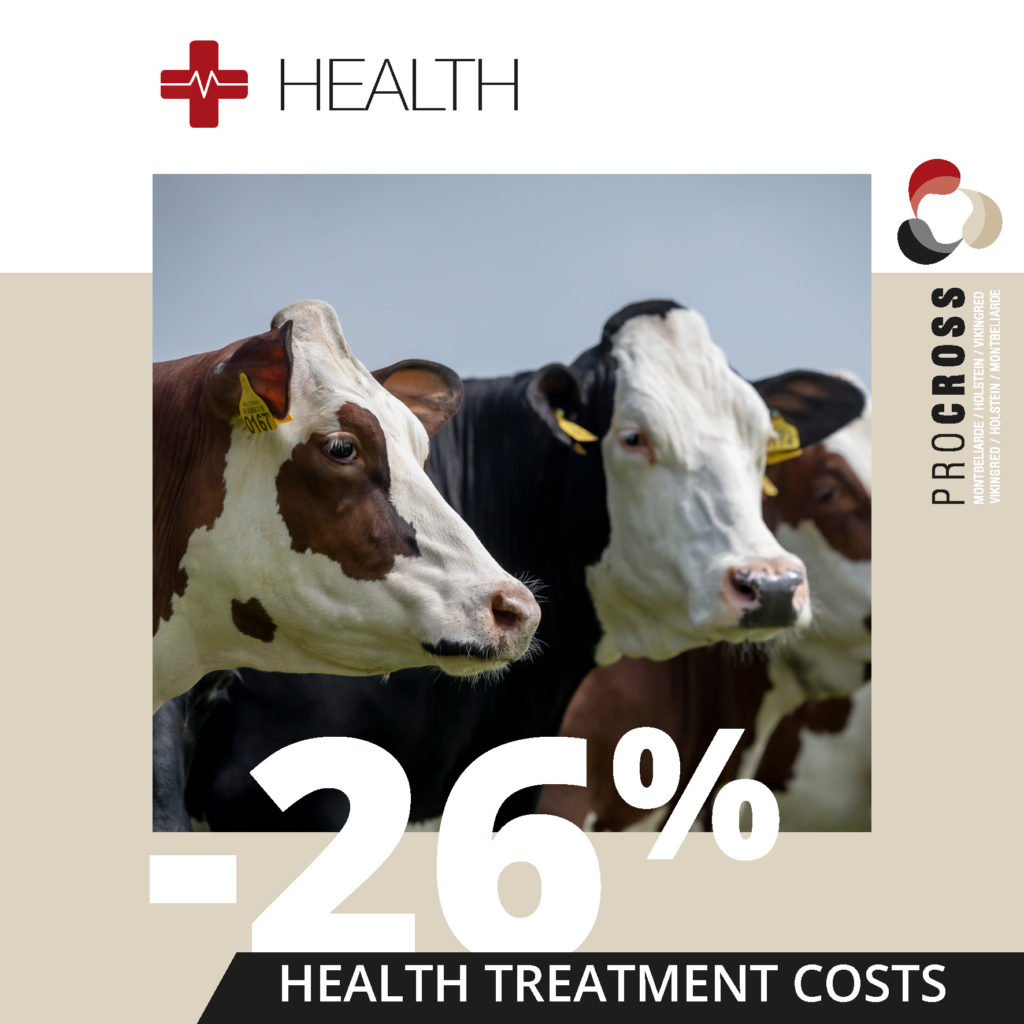
Health
The ProCROSS cow is a much stronger cow than the pure Holstein. This is thanks to the Montbéliarde breed, which offers plenty of strength and excellent feet and legs, and the VikingRed, with its excellent genetics for health across a range of traits. In addition to the benefits from each of these ProCROSS breeds is the benefit of heterosis. Also known as hybrid vigour, heterosis gives the crossbred animal better performance than the average of its parents. It has been proven that heterosis has a positive influence on most health traits and research has shown that veterinary costs go down by 26% in the second and third lactations.

Cull Value
In the 10-year study, ProCROSS crossbred cows had a 16% higher cull value than their Holstein herd mates.

Efficiency
ProCROSS cows have a more stable body weight than the Holstein during lactation. The Holstein cow often starts her lactation with too much body condition and uses energy to convert her bodyfat into milk. By the end of lactation, the Holstein is often too frail. With their more stable metabolism, ProCROSS cows can produce milk more efficiently, directly from the feed they eat rather than ‘off their backs’. As a result, research has shown their feed efficiency to be 8% greater than the Holstein’s. In other words, they produce more milk solids per kg of dry matter intake.

Longevity
One of the most important conclusions of the University of Minnesota study is that ProCROSS cows remain in the herd for 147 more days than their Holstein herd mates. Longevity is a good indicator of profitability for commercial dairy farms and an extra 147 days means 147 more days of production.
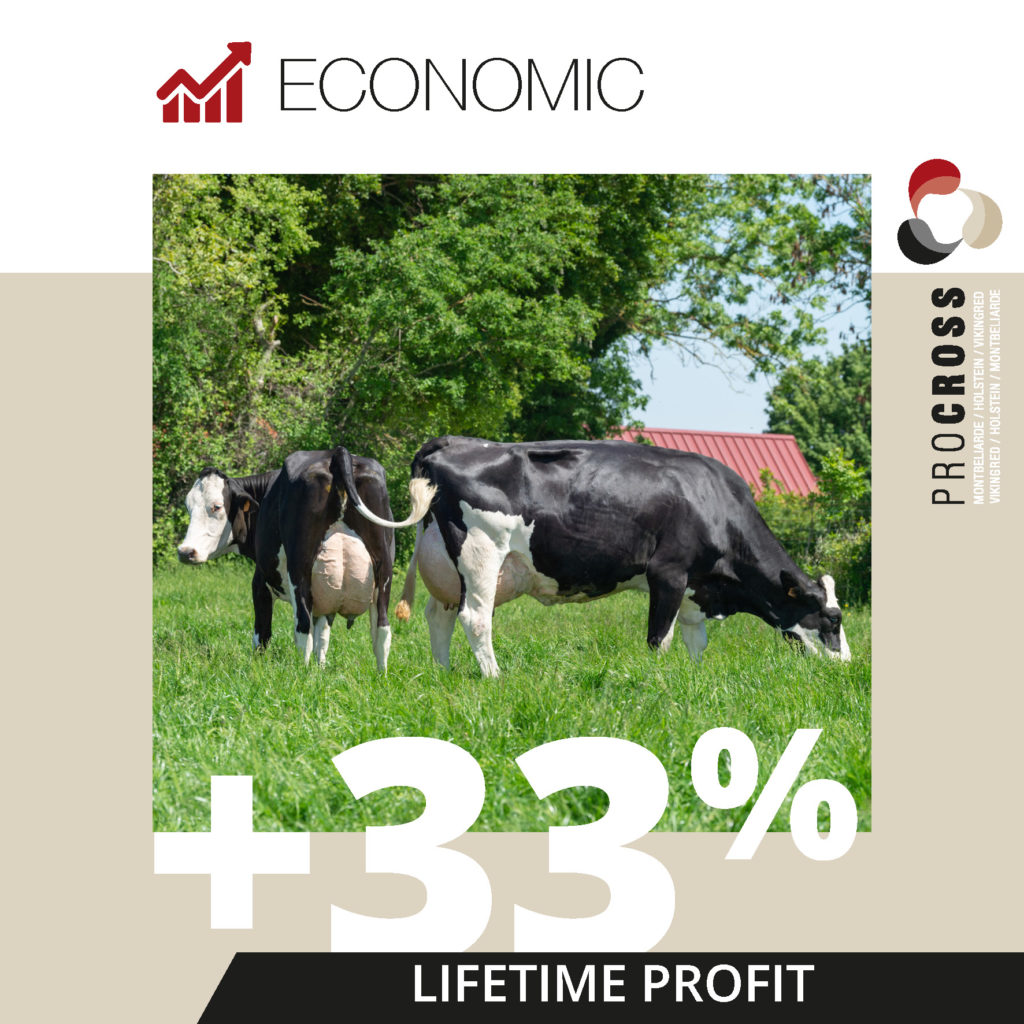
Lifetime Profit

Open Days
The 3-breed ProCROSS cows have -15 to -20 fewer days open during their first three lactations compared with their Holstein herdmates The higher conception rate, fewer days open and fewer times bred for the ProCROSS cows reduced their cost of insemination compared with their Holstein herdmates, & also led to longer herd life for the ProCROSS cows compared with Holstein. To conclude, you get a more fertile cow, easy to live with & more profitable. These results followed the last article of the Journal of Dairy Science, on the 10-year study leads by University of Minnesota, reviewed & updates. This update includes new data from the last generation of ProCROSS cows (Generation 3, Holstein sired).
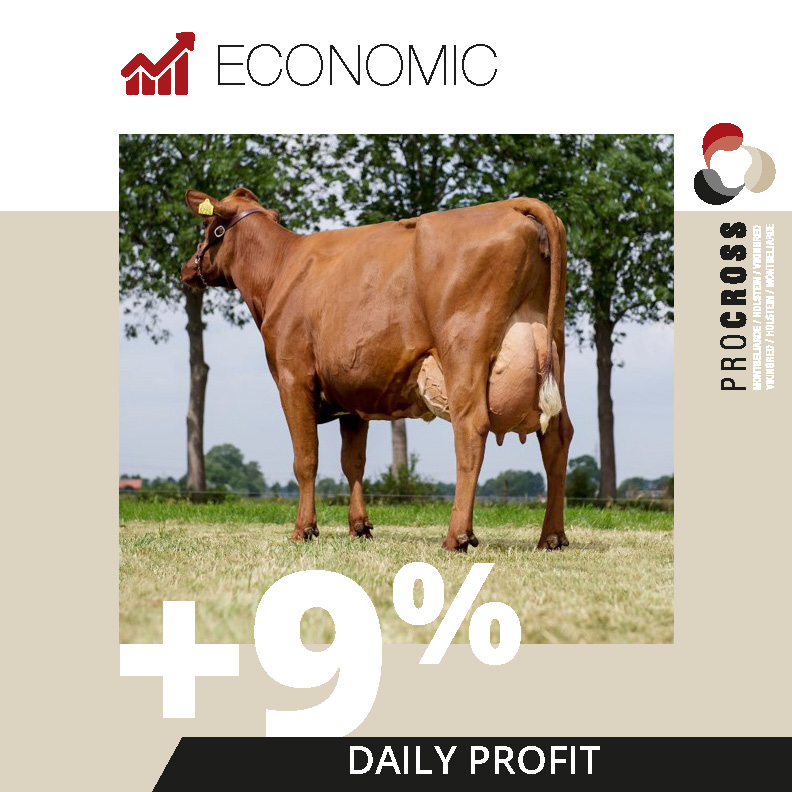
Daily Profit
Holstein, VikingRed and Montbeliarde produces daily profits which are on average, 9-13%, greater than those from pure Holstein. The financial advantage was demonstrated to come from a wide range of factors including greater lifetime weights of fat and protein, better fertility, fewer health treatments, higher calf and cull values, and improved rates of survival.
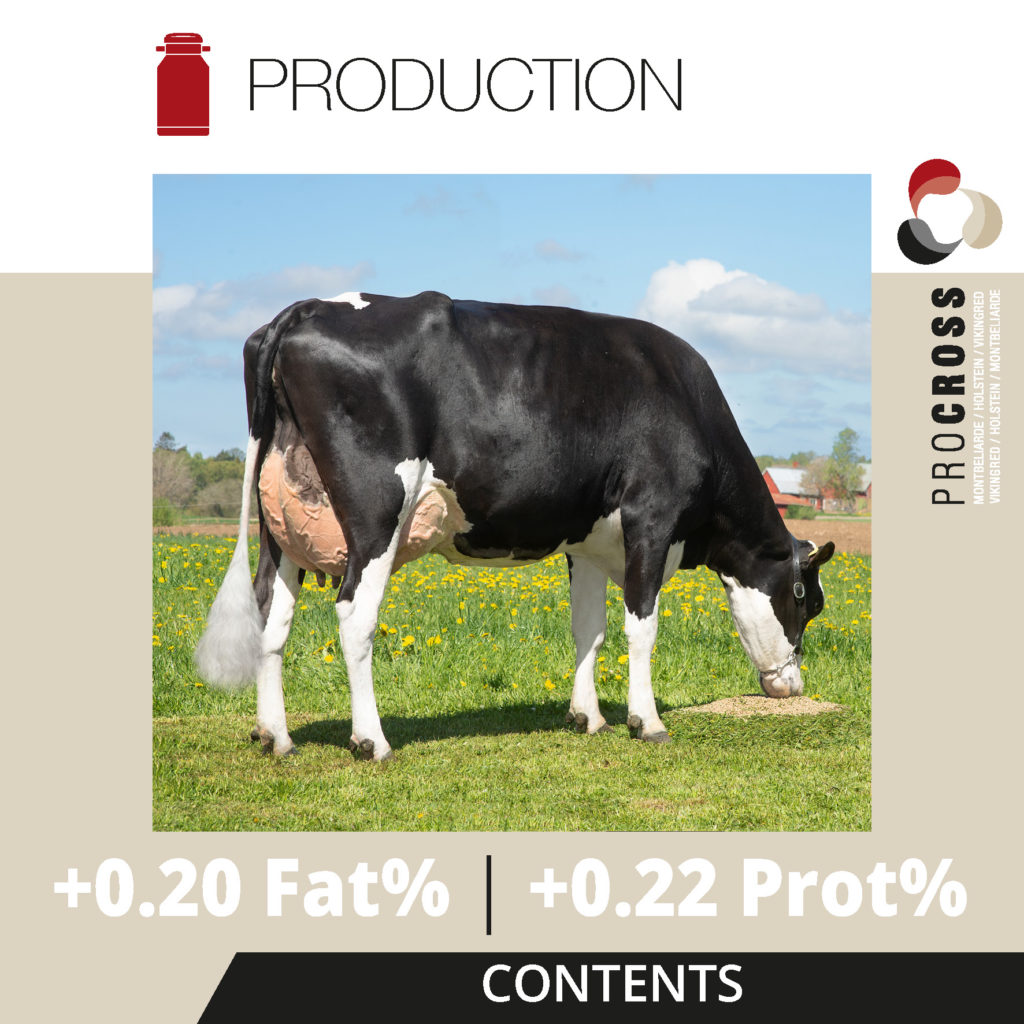
Fat & Protein %
Higher Fat% + Prot % for all generations ProCROSS cows compared to Holstein. For protein %, increase of +.10 up to +.22 points across all generations of ProCROSS. For fat%, increase of +.10 up to +.20 points across all generations of ProCROSS. The higher conception rate, fewer days open and fewer times bred for the ProCROSS cows reduced their cost of insemination compared with their Holstein herdmates, & also led to longer herd life for the ProCROSS cows compared with Holstein. Across generations, ProCROSS cows produce as much as their Holstein herdmates, in terms of fat & protein production with higher fat & protein percentages.

Daily Solids
For daily production across all days of the lifetimes of cows, the 2-breed crossbreds had +1% higher daily fat plus protein production and the 3-breed ProCROSS cows had -1% lower daily fat plus protein production compared with Holstein herdmates. The higher conception rate, fewer days open and fewer times bred for the ProCROSS cows reduced their cost of insemination compared with their Holstein herdmates, & also led to longer herd life for the ProCROSS cows compared with Holstein. Across generations, ProCROSS cows produce as much as their Holstein herdmates, in terms of fat & protein production with higher fat & protein percentages.

Early Calving
The ProCROSS crossbred cows calve at a younger age compared to Holstein, while they are more fertile & produce as much as pure Holtein.
These results followed the last article of the Journal of Dairy Science, on the 10-year study leads by University of Minnesota, reviewed & updates. This update include new data from the last generation of ProCROSS cows (Generation 3, Holstein sired).
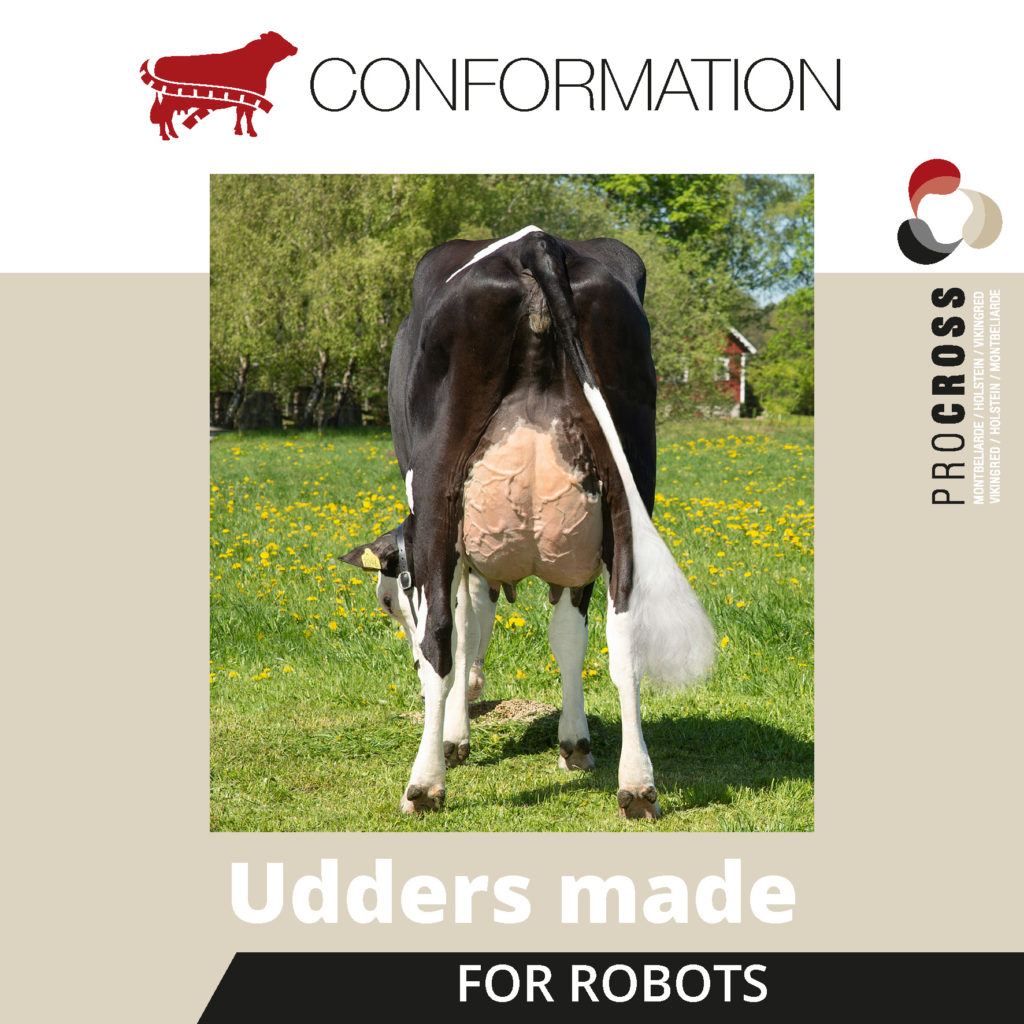
Udders
ProCROSS cows had longer teats & more ideal rear teat placement (less crossing or touching of teats) than Holsteins as reported in a 2020 article published in the Journal of Dairy Science. Considering their superior results for longevity, sound udder conformation provided for long lifespans & high production of the ProCROSS cows.

Calf vitality
A November 2020 article from the Journal of Dairy investigated stillbirth rates and found the three-breed ProCROSS calves (born to two-breed crossbred dams) had half the stillbirth rate of their Holstein herdmates at first calving (4% vs 8%). Similarly, Holstein-sired calves from three-breed ProCROSS cows had lower stillbirth rates than pure Holsteins at first calving (4% vs 7%).
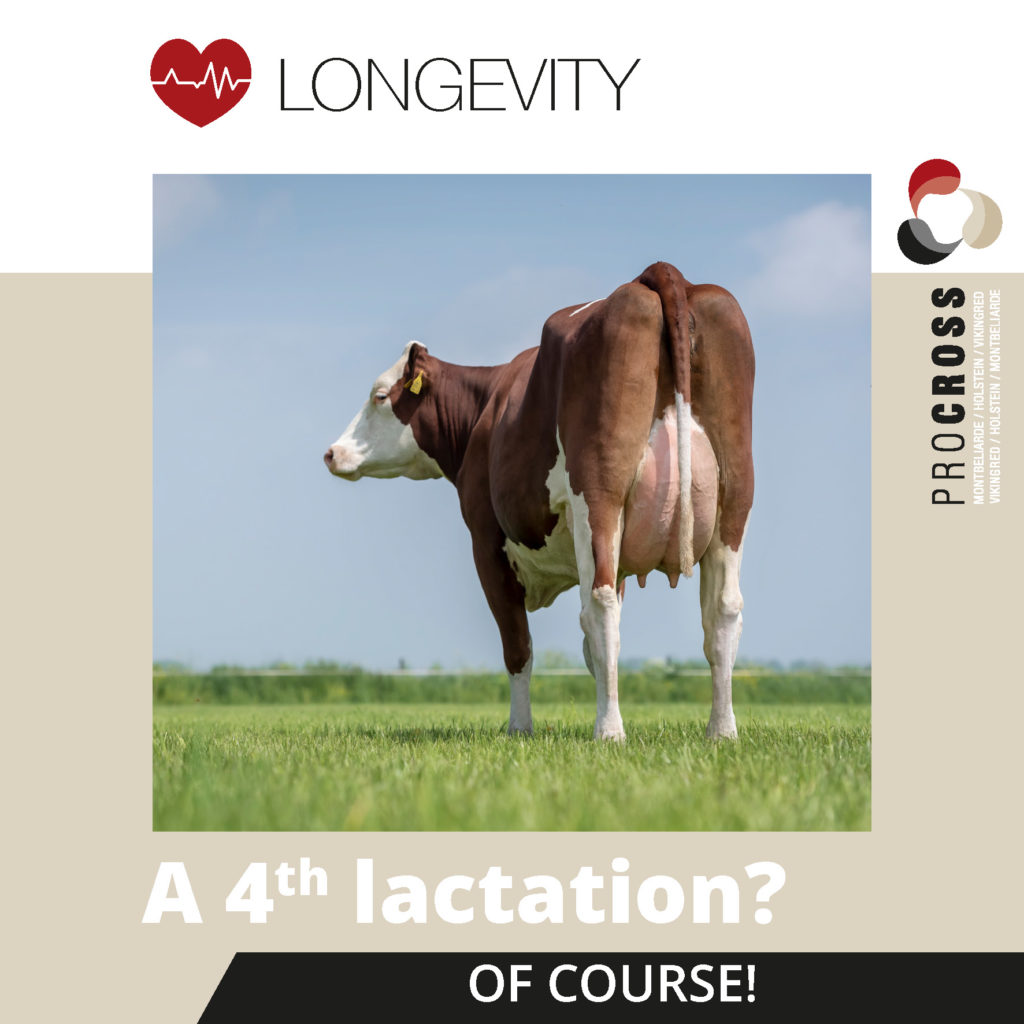
Longevity
Lifespan is longer for the ProCROSS cattle, with almost twice as many three-breed ProCROSS cows (41%) surviving to their fourth calving than their Holstein herdmates (22%).

Robustness
The ProCROSS cows have a shorter stature with more body condition compared to the pure Holstein. These 2 traits can explain the overall higher fertility & health of the ProCROSS compared to the Holstein.
When all the benefits are combined, the ProCROSS cow delivers 33% more profit than the pure Holstein in her lifetime. This is because she is easier to manage and costs less to keep for the same level of performance. When looking at lifetime production, the ProCROSS is the kind of cow farmers want in their herds!
Source : Journal of Dairy Science, January 14, 2021
https://www.journalofdairyscience.org/article/S0022-0302(21)00030-8/fulltext
